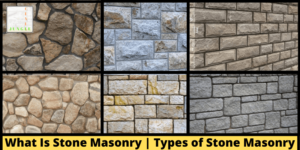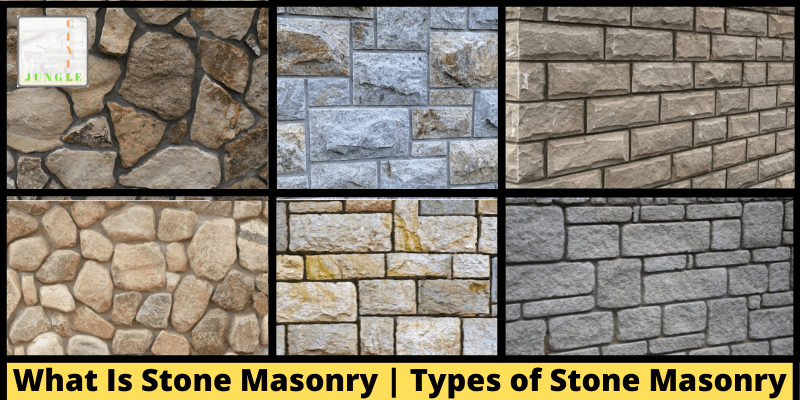Pro Angle Masonry Charleston involves building structures from brick, concrete blocks, and structural clay tile held together with mortar. Expert masons know how to lay the mortar and blocks perfectly for maximum strength.
Masonry is a type of construction that uses bricks, concrete blocks, or stone to create walls. These materials are held together with mortar. When used for buildings, masonry provides strength and durability to the structure. It can also help with water resistance and soundproofing. In addition, masonry is visually appealing and can add a touch of elegance to any building or home.
Brick masonry is often used for walls, patios, and walkways. It can also be used to build fireplaces and chimneys. Brick masonry is very durable and can last for years. It also resists weathering and damage from insects. Masonry can also be used for retaining walls to keep soil from eroding.
The durability of masonry is dependent on the material and how it is constructed. The mortar must be properly mixed with the proper ratio of sand, cement, and lime. In addition, the stones and bricks must be correctly sized. The size of the stones and bricks affects how much weight the masonry can bear.
Depending on the environment, masonry may be exposed to extreme temperatures, sunlight, rain, and other weather conditions. This can affect its appearance and durability. However, the durability of masonry can be improved by using a special admixture to increase its freeze-thaw and carbonation resistance.
Another important factor in the durability of masonry is the reinforcement. This is added to the masonry during the construction process. The reinforcement helps to improve the strength of the masonry and reduce cracking. This is particularly important for walls in high-rise buildings, where the walls are subject to great lateral loads.
One disadvantage of masonry is that it is expensive compared to other types of building materials. This can be a problem for businesses that are looking to save money on their projects. However, if the masonry is well constructed and maintained, it can last a long time.
It is also important to consider how a masonry wall will blend in with the rest of the structure. It is possible to make a masonry structure match the style of an existing building by using different colors of mortar and bricks. This can also be done to give a new building a more rustic look.
Fire Resistance
Masonry has long been recognized for its excellent fire resistance. In fact, masonry is considered “Type I” construction, meaning that it will resist the spread of fire more than most other types of wall construction.
Typically, fire ratings for masonry walls are established according to the procedures defined in Standard Test Methods for Fire Endurance of Building Construction and Materials (ASTM E 119). Two factors that must be taken into account are fire endurance and fire resistance. Fire endurance is the elapsed time during which a structure or material shows that it withstands determined conditions of temperature and performance, while fire resistance refers to the ability of an entire assembly or component to resist damage from fire.
A fire rating is normally determined by performing a series of tests on specimens that are built up using different layers of concrete masonry or clay masonry units. One side of the specimen is exposed to controlled heat and then measured for elapsed time. The results are then compared to a standard table that determines the fire resistance rating in 1- or 1/2-hour increments.
Hollow unit masonry assemblies are typically grouted in their entirety, but they can also be partially or completely filled with loose-fill materials of the following types: sand, pea gravel, crushed stone, or slag that conform to ASTM C33 requirements; pumice, scoria, expanded shale, expanded clay, expanded slate, expanded fly ash, or cinders in compliance with ASTM C331; or perlite or vermiculite that meet the requirements of ASTM C549 and ASTM C516, respectively.
The fire resistance of concrete and clay masonry is normally calculated according to the formulas shown in Table 1 (refer to NCMA Technical Notes, TN 21-14). This equation also applies to mortar wythes that are partially or completely filled with loose-fill materials. In cases where the finish on the non-fire-exposed side of a wall is not included in the calculation, the thickness of the finished layer, Tef, is added to the calculated value of the concrete or clay masonry equivalent thickness to obtain the fire resistance rating.
As an alternative to calculating the fire resistance of masonry using this formula, many code jurisdictions now require a balanced design approach to fire safety that includes four key elements. This balanced design requires that codes and standards include fire detection, suppression, education, and redundancy in order to provide occupants with the greatest opportunity to live through or ride out a fire.
Stability
Masonry is a specialized form of construction that requires a lot of time and effort to be completed. It involves the use of bricks, concrete blocks, structural clay tile, stones, and other masonry materials held together with mortar. Masonry is also referred to as “block” building. It is a type of construction that utilizes heavy materials and is often difficult to move around, so it requires a lot of manpower for its construction. Masonry can be done for various purposes, including making barriers to separate property lines and building walls for structural use. It is important to hire professionals for this work since it can be dangerous if not done correctly.
While masonry is strong enough to resist many types of forces, it does not have the strength to support tensile forces such as those from wind or earthquakes. This is why it is essential to have rebar in a masonry structure, especially when building a large structure. The rebar should be spaced at the proper intervals to prevent failure.
Like concrete, masonry tends to be high in compressive strength and low in tension strength. It is also highly resistant to fire, so it can be used in fire-prone areas of the country. It also has a great thermal mass, which means that it can retain heat and reduce heating costs.
However, masonry structures must be carefully designed to avoid collapsing under loads that exceed their design capacity. One of the ways to achieve this is to incorporate a shear wall, which is a vertical wall that transfers lateral loads into the masonry bearing wall. The shear wall is usually constructed of concrete, but it can be made of masonry as well.
Another way to increase the tensile strength of masonry is to use concrete reinforcing bar (rebar) in addition to the shear wall. The rebar will help increase the tensile strength of the wall and will also prevent cracking. This technique can be expensive, but it is worth the extra cost in order to ensure that your building is safe and secure.
Appearance
Masonry provides a high-quality, attractive appearance that adds value to buildings. It is also a fireproof material, which can be beneficial for homes and businesses in areas that experience frequent wildfires. It is durable and requires minimal maintenance, which saves money in the long run. Masonry structures also provide a sound barrier and reduce interior temperature fluctuations. They can even withstand strong winds that would otherwise destroy less robust construction.
Bricks, blocks, and stones are available in a wide variety of colors and textures to match any architectural style. Masonry contractors are experienced in selecting the right materials for a particular project. They can even create custom designs that will match a specific building site.
Typically, a mason will work with a team of other skilled construction workers to complete the project. This team will be supervised by the construction foreman, who assigns tasks to members of the crew. Masons will use a variety of tools for their job, from simple hand-held hammers to more sophisticated chisels and grinders. They may also work with a variety of machines, including frame and circular saws, molding and surfacing machines, and lathes.
Masons must be aware of the environmental impact of their work. They must ensure that the materials they are using are sustainable. They must also keep records of their work and be ready to make adjustments if necessary. They must also know how to deal with unexpected problems during a construction project.
The gavel is a symbol of authority for a Mason, and it is often used to keep order in meetings. It also serves as a reminder to Freemasons to focus on moral and spiritual matters. The all-seeing eye atop a pyramid is also an important symbol to Freemasons, as it reminds them of the importance of God in their lives.
During the medieval period, masons organized themselves into guilds. These organizations regulated the qualifications for masons, and members were classified as apprentices, journeymen (now called Fellow Craft), and master masons. Eventually, the masonry profession evolved into what is now known as Freemasonry, the world’s oldest fraternal organization. Today, masonry still plays a significant role in community life and continues to serve as a source of personal growth and development for many men.
